
[caption id="InBritainTheseDays_img1" align="aligncenter" width="1024"]
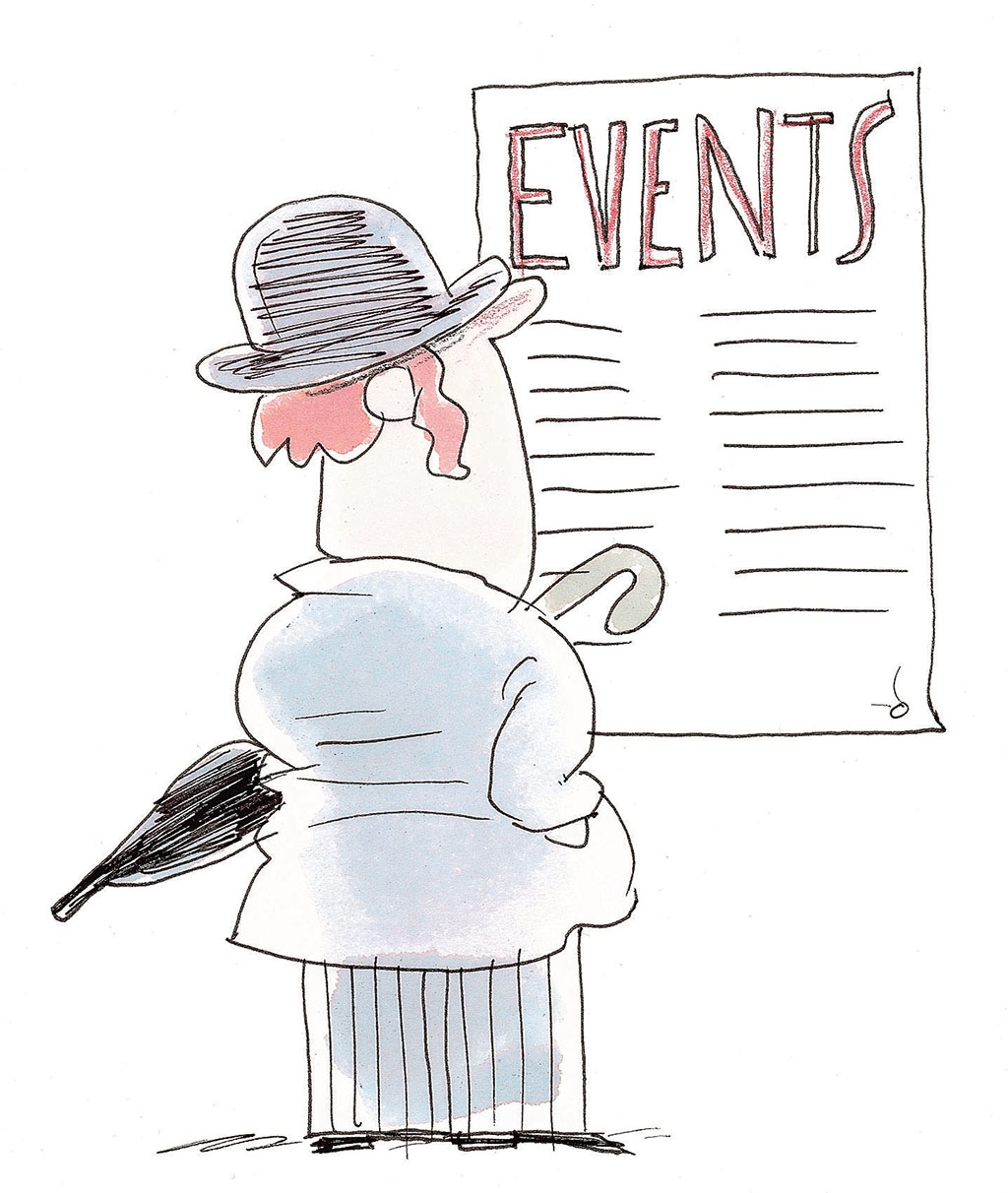
[caption id="InBritainTheseDays_img2" align="aligncenter" width="1024"]
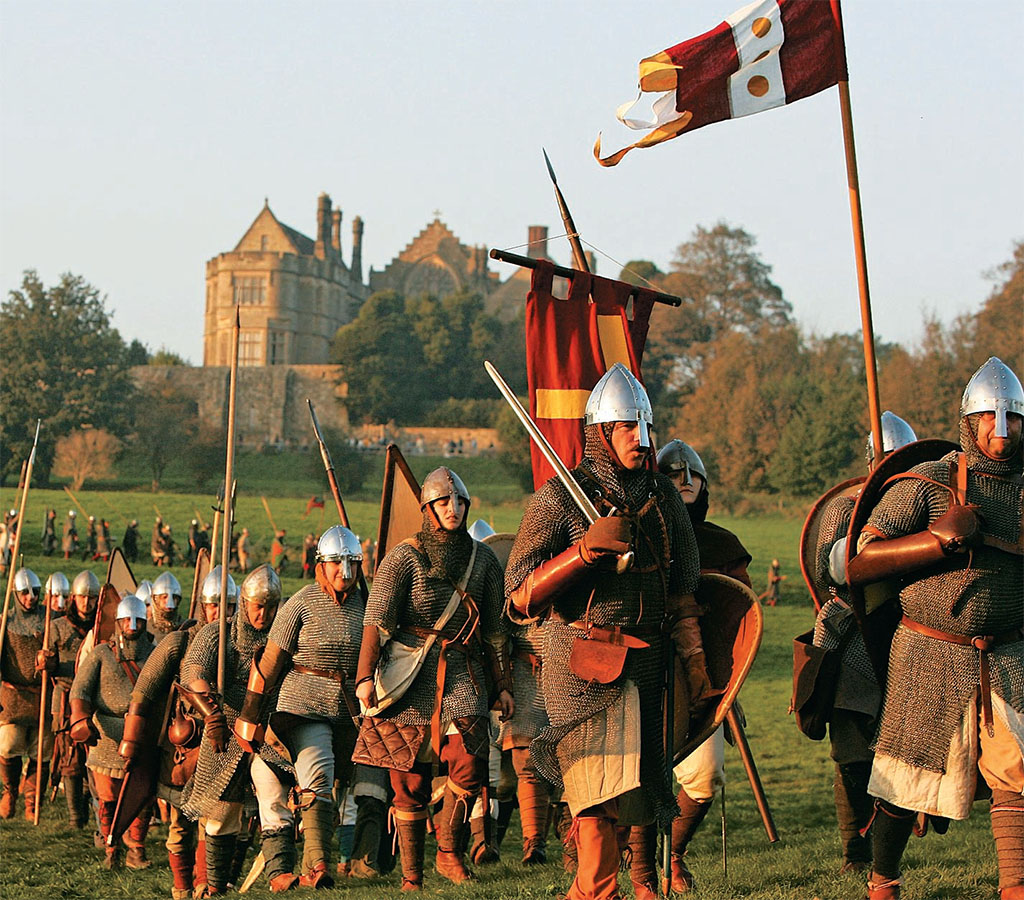
GETTY IMAGES
BATTLING AGAIN AT HASTINGS
EVERY YEAR in mid-October, reenactors from across Britain gather to fight again the Battle of Hastings and commemorate the best-known date in English history. Last year’s re-creation of the famous October 14 conflict proved to be a “megabattle,” with more than 3,000 fighters from at least 18 countries massed in full war dress for the event. Many contingents of Poles, Russians, Czechs, Australians, Americans and Finns flew in to be part of the 940th anniversary melee. For the first time this year, there were even a couple of Frenchmen fighting on the side of the Saxons.
[caption id="InBritainTheseDays_img3" align="aligncenter" width="675"]
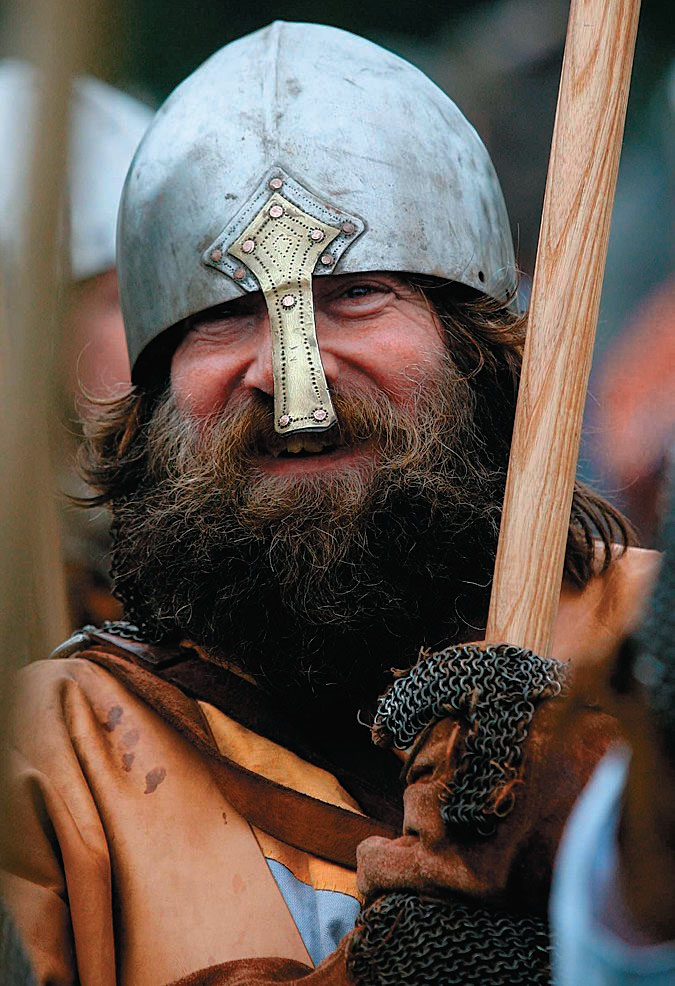
More than 20,000 spectators witnessed the combat at Battle Abbey, which was choreographed to reflect as accurately as possible most of the action that took place in 1066. When the archers let fly the famous fatal flight at King Harold, the fighter playing his role (a real-life sergeant in the Military Provost Guard Service) duly produced a dummy arrow, placed it in his eye and, after collapsing heroically, retired to the beer tent. After all, no matter how many times the battle gets replayed, the outcome is always the same.
In 1066, of course, King Harold’s Saxons came to meet William the Conqueror’s invading Norman army straight from another battle. His Saxon army had been on the field at Stamford Bridge, a few miles east of York, having just defeated the Viking cohorts of rival claimant Harold Hardrada on September 25, when they heard of the Norman landing on the south coast. To meet this newest invasion, the Saxon soldiers had to make a quick march some 270 miles south and re-form into battle. This year a platoon of nine latter-day Saxons in full dress and kit spent three weeks on the road hiking from Stamford Bridge to Battle to retrace the original march. Now, that’s taking it seriously.
SOUTHERN REACH
THE ROYAL AIR FORCE is boldly going where it has never gone before—to the South Pole. A specially selected team of seven RAF personnel is traveling overland on foot across the ice cap of Antarctica in a bid to follow in the tracks of Captain Robert Scott and plant the Union Jack on the geographic pole. Their trek is taking them across 677 miles of frozen wasteland—the highest, most arid, coldest and most windswept continent in the world. Each man is hauling 180 pounds of equipment by sledge. The expedition is named Southern Reach; its royal patron is HRH Prince Philip. The team set out in late November from the Patriot Hills research station at Hercules Inlet after flying down from Punta Arenas, Chile. You can monitor the team’s progress at www.southern reach.co.uk. Currently the temperature at the South Pole, by the way, is -78 degrees.
THE QUEEN’S SWANS GRACE WELLS
SINCE THE 19TH CENTURY, swans have inhabited the moated medieval palace of the Bishop of Bath and Wells, adjacent to majestic Wells Cathedral. For more than 150 years, Wells’ swans have been trained in the old bell trick. That is, by pulling a chain attached to a small bell below a window, the swans received food. Recently, the last palace swan was retired to a sanctuary after her mate died.
Now, the Queen has sent a gift of a family of swans to the Bishop of Bath and Wells to mark the 800th anniversary of the moated bishop’s palace. Palace gatekeepers Paul and Carol Arblaster have been given the job of teaching the new birds the old trick. But the Arblasters revealed: “We had no one ahead of us here as a mentor to show us how to take over the job. So we’ll just have to try a few tricks that have been suggested.”
The bishop, the Right Reverend Peter Price, was just pleased to have the new swans. “Most of the swans in this country belong to Her Majesty, and she’s given us four lovely swans to celebrate our 800th anniversary,” he said.
[caption id="InBritainTheseDays_img4" align="aligncenter" width="650"]
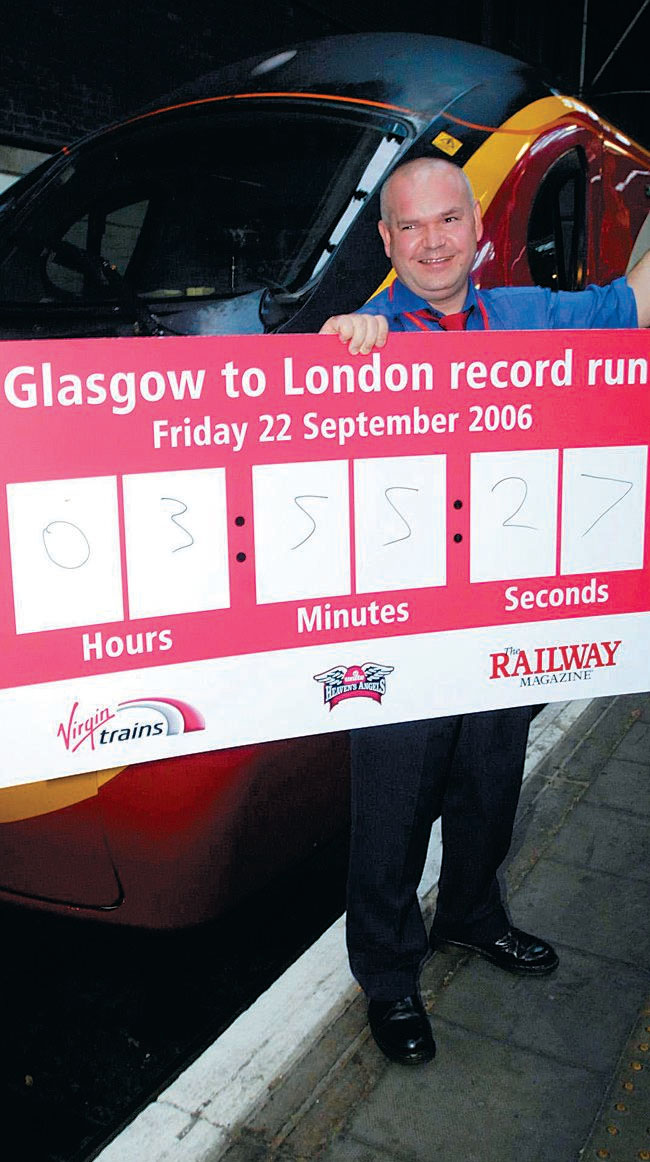
ANDREW STUART/PA/EMPICS
A NEW TRAIN SPEED RECORD
A VIRGIN TRAIN has shattered the speed record on the Glasgow–London line, beating by 19 minutes the old record set 25 years ago. Virgin Trains made the 401-mile journey in three hours and 55 minutes—the first sub-four-hour travel time between the largest cities of England and Scotland. Four hundred passengers made the run from Glasgow Central to London Euston. Rail enthusiasts from around the country traveled to Glasgow just to be part of the advertised record attempt.
The train was officially named Heaven’s Angels before it set off. The Virgin-supported charity by that name received the more than £30,000 ticket money from the ride, to be used in its work on healthcare delivery in Africa. A Virgin director predicted before boarding, “It’s going to be a nail-biting event from beginning to end.” After pulling the train into Euston, though, train driver Russell Southworth described the journey as a dream come true.
The new speed record comes as Britain’s High Speed Train (HST) celebrates its 30th anniversary. Better known as the Inter City 125s, the trains have dominated long-distance service from northern Scotland to Cornwall since their introduction on the Thames Valley line in 1976. While the rail industry and Government are in discussions about a long-term replacement, the HSTs are certainly expected to be rolling along for their 40th anniversary.
SALUTING ROCK ’N’ ROLL’S BIRTHPLACE
BEFORE THE LIVERPOOL SOUND and the “British invasion,” there was the 2 I’s. Fifty years after the legendary coffee house opened in Soho’s Great Compton Street, fans and performers returned to see it honored. Sir Cliff Richard unveiled a plaque to remember the tiny basement often said to be the birthplace of British rock ’n’ roll. Now the Boulevard Bar and Dining Room, in 1956 audiences jammed its basement room to hear such acts as Sir Cliff, Adam Faith, the Shadows and Tommy Steele.
Westminster Councilor Robert Davis summed up the festivities: “In the early days of rock ’n’ roll in this country, before the Beatles had even formed, pretty much every act that made it big cut their teeth at the 2 I’s. It is only fitting that, half a century since it opened its doors, it is commemorated with a plaque so that the thousands of people who walk along Old Compton Street every day know they are passing the place where British rock ’n’ roll was born.”
ABERDEEN IN BLOOM
FOR 39 YEARS RUNNING, the gray granite city of Aberdeen has won the Scotland in Bloom award for cities. Now, Britain’s northernmost major metropolis has added another floral honor, winning the Royal Horticultural Society’s (RHS) highly prized Britain in Bloom UK city award.
Judges cited Aberdeen’s great community effort, which involved local businesses, civic groups, the city council, children and many green-thumbed volunteers. RHS Britain in Bloom judge Clive Addison enthused, “Aberdeen provided an outstanding combination of brilliant bedding and floral displays, wonderful trees, parks and borders and numerous lovely gardens and commercial displays.” Of course, the prize should come as no surprise to Aberdeen residents, or to anyone who has visited the Granite City and its gardens.
THOMAS HARDY FANS PROTEST!
YES, FANS OF THE FAMOUS DORSET novelist are up in arms over plans announced by the National Trust to turn the Higher Bockhampton birthplace of Thomas Hardy into a holiday cottage and rent it out to vacationers. The small two-bedroom house in a hamlet outside Dorchester draws 15,000 visitors from all over the world between April and October. Born in the cottage in 1840, Hardy wrote several of his early works here, including the much-loved Far From the Madding Crowd.
Now, the National Trust wants to ensure the cottage is “financially sustainable” with an off-season income stream. Local residents fear that updating the cottage to accommodate holiday tenants will compromise the basic, rustic charm of the place.
For Hardy’s legion of devotees, however, there is something more visceral involved. Rosemarie Morgan, president of the Thomas Hardy Association, voiced their feelings: “For people who follow one of the greatest writers in the English language with such devotion, particularly foreigners, it’s a shocking thing to think that tenants can leave their marks on a place that figures so highly in his novels and poetry and his life. Only in England would this happen.” The National Trust will have to get planning permission from the West Dorset District Council in any event. Stay tuned. This time it seems local interests are the champion of preservation.
[caption id="InBritainTheseDays_img5" align="aligncenter" width="1024"]
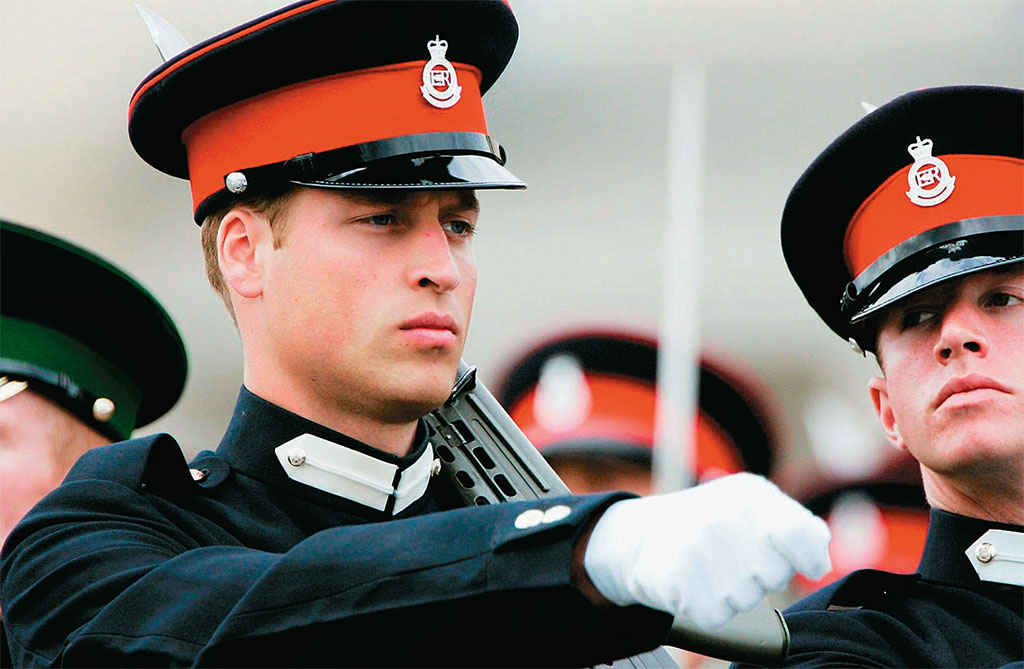
TIM GRAHAM/GETTY IMAGES
PRINCE WILLIAM ENTERS THE CAVALRY
WITH PRINCE WILLIAM’S passing out of Sandhurst in December, he follows his brother, Prince Harry, into the Household Cavalry’s Blues and Royals. As an officer, the second in line to the throne aims to lead a troop in an armored reconnaissance unit—again like brother Harry. Now, the prince is off to a six-month course at Bovington Camp in Dorset to learn how.
As close to the throne as William is, though, there may well be some restrictions put on his military experience. The Ministry of Defense confirmed that some situations or areas may be deemed too dangerous for William to serve in, or that his presence might lead to extra risk for the prince and those he commands.
With Prince William’s formal education now complete, however, the future Prince of Wales also starts a broader preparation for his future royal role. A year or so into his Army career, William will undertake attachments to both the RAF and Royal Navy to familiarize himself with those branches of the military he will one day head.
At the same time, the prince will be carrying out public engagements during his military career, and learning the nuts and bolts of the royal concern: charitable work, British constitutional law and estate management. Unquestionably, William has a busy few years ahead.





Comments